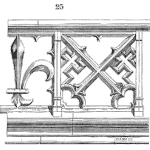
As you may recall the probability density function describes the behavior of a random variable.
Like a histogram, the PDF when plotted reveals the shape of the distribution. The PDF also has the property that the area under the curve for is one. Another property is the PDF is defined across the entire sample space. [Read more…]












